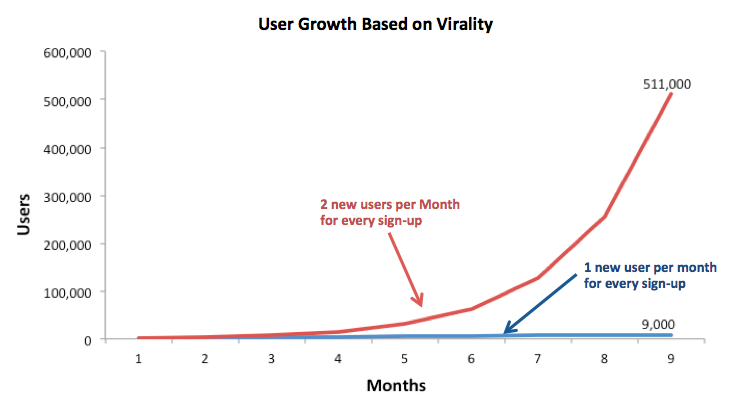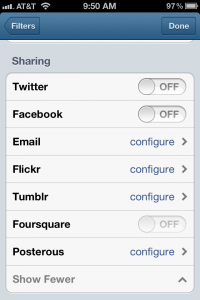
Vinicius Vacanti is co-founder and CEO of Yipit. Next posts on how to acquire users for free and how to raise a Series A. Don’t miss them by subscribing via email or via twitter.
Your launch will have very little to do with your startup’s eventual success and you probably spend way too much time worrying about it.
That being said, a successful launch can be used to gain thousands of early users if you did your job right when they show up. It won’t make or break your startup, but it will help.
There’s great advice out there on how to pitch a tech blogger. My favorite is this post by Mark Hendrickson, a former TechCrunch blogger.
However, it can also be helpful to look at actual examples of pitches that worked. So, I’m including here two tech pitches that Jim Moran, my co-founder, and I submitted to TechCrunch for two projects we worked on before Yipit.
A Little Background
Before we launched Yipit, we worked on two side projects called 140it and UnHub. We built both in a weekend and were looking to get some broader exposure for them.
The problem was that we didn’t have an “in”. It’s always best to get a warm intro to a blogger from an investor or friend. We just didn’t have it.
So, we decided to try TechCrunch’s startup submission form which didn’t look promising. I pictured the other side as an endless stream of terrible pitches that TechCrunch authors dreaded and probably didn’t look at.
Less than an hour after submitting 140it via their form, we get out this email from TechCrunch writer Jason Kincaid:
Hi Vinicius, looks cool, am trying it now and writing up a post. Please lift the password in around 20 minutes or so (let me know once you have).
Thanks,
Jason
 It was up on TechCrunch shortly after and thousands of people tried out the site, got the bookmarklet, tweeted about it, and started using it. While we never intended to turn 140it into a business, it was a great experience and gave us the confidence to keep pushing forward.
It was up on TechCrunch shortly after and thousands of people tried out the site, got the bookmarklet, tweeted about it, and started using it. While we never intended to turn 140it into a business, it was a great experience and gave us the confidence to keep pushing forward.
Months later, TechCrunch also covered UnHub.com, another weekend project of ours. Again, we applied via their submission form.
Key Tactics
I’ve included both TechCrunch pitches below but wanted to highlight the key tactics we used in our submission:
- Tell a Story. For UnHub, we reference the much talked about new Skittles corporate website had just launched as a decentralized experience. UnHub was a way for anyone to create that Skittle experience.
- Ride Current Trend. For 140it, in 2009, lots of people were building Twitter tools to “fill holes”.
- Reference Blogger’s Previous Posts. For both UnHub and 140it, you’ll see that we picked out a previous TechCrunch post where the author had made a point that was consistent with the project we were pitching.
- Exclusivity. TechCrunch would much rather cover a new startup that hasn’t been covered before. So, we password protected both 140it and UnHub and told them we wanted them to cover our project first.
- Concise. Do not go off and write huge essays. Get to the point of what your startup does right away.
- Humility. With both 140it and UnHub, we were careful to admit the simplicity of the project.
- Admit competitors. You have competitors, admit them. The blogger will have to look them up if you don’t. That means they will have to do more work reducing the chances they cover your startup.
- Give them assets. If the site is private, give them beta invites. Create a demo video so they can add it to their post about you (we did that for both 140it and UnHub). They don’t have to be professionally done. Just record yourself using the site with a voiceover. If it makes sense, create an example account on behalf of the blogger as we did with UnHub for Michael Arrington. Throw in some screenshots if you don’t have a demo.
Below are the two pitches we submitted.
140it TechCrunch Pitch
Company Name: 140it
Website: http://140it.com
Submitted: January 26, 2009 at 11:55 AM PST
Description: 140it helps twitter users reduce their tweets to less than 140 characters. It abbreviates words, converts company names to their StockTwits ticker and shortens URL’s using bit.ly. Its intended use is as a bookmarklet so that the user can use 140it without ever having to leave Twitter. Please see our demo video at http://140it.com (The password for the video is 140.)
Note: http://140it.com is currently password protected. The login credentials are:
username: friends
password: 140
Additional Info: This was a weekend project for us and we aren’t trying to make money off of it. We just wanted to give back to the Twitter community.
We were inspired by a recent Arrington post where he said: “this is the way to fix Twitter, directly via the user interface, not from a third party site that users will forget to go to.”
We built 140it to work as a bookmarklet so that the user would never have to go to our site. We also made it a bookmarklet so that it would work on all browsers including Chrome which has become our de-facto browser.
Also, we would love to get 140it to as many people as would like it and are thus happy to have TechCrunch be the first to reveal the project.
Competitors: Twonvert: http://www.twonvert.com/
TweetShrink: http://tweetshrink.com/
But, unlike our competitors, we made our utility work as a bookmarklet. We also convert company names to their StockTwits tickers and shorten URL’s using the bit.ly API.
Tags: twitter, utility, bookmarklet
UnHub TechCrunch Pitch
Company Name: UnHub
Website: http://unhub.com
Submitted: March 6, 2009 at 11:16 AM PST
Description: We were really excited about the new Skittles website, so we made a way for anybody to have one. Your UnHub URL allows others to navigate your profiles, photostreams, channels, etc with a persistent bar at the top of their screen. When we saw the Skittles’ website on Monday, we thought its user interface would work well for individuals who wanted to showoff their web presence; and, three days later, we are releasing UnHub.
Your UnHub URL makes a lot of sense for the “Web” entry on your Twitter page. As an example, we made one for Michael Arrington:http://unhub.com/MichaelArrington and we also made one for Josie’s Restaurant here in New York: http://unhub.com/josies
Overall, we wanted UnHub to be a dead simple, lightweight way to display your “decentralized me” to others. On that topic, we enjoyed your post (http://www.techcrunch.com/2008/03/30/friendfeed-the-centralized-me-and-data-portability/) and some earlier discussions by Robert O’Brien, Loic Le Meur, et al.
Additional Info: We don’t think UnHub is technologically remarkable in any way (iframes have been around for a long time). That said, we’re excited about it for the same reason we were impressed with Skittles: it could be a new way for companies and individuals to showcase their online presence.
In addition to individuals using UnHub, we also think businesses should take a page out of Skittles’ book. UnHub is a simple (and free) way for them to start. A restaurant’s UnHub could include a link to their current web page, but also to a google map of their location (for directions), yelp profile (for reviews), menupages (menu), opentable (reservation) and seamlessweb (ordering online). Seehttp://unhub.com/josies
Soon we’ll allow people to replace their UnHub URL with a custom domain name, which should make the experience more personal. We’ll also start delivering analytics.
Also, Twitter has temporarily disallowed iframes, so we’re redirecting to Tweetree for now.
As far as our backgrounds, please check our new unhub pages: http://unhub.com/vacanti and http://unhub.com/jdmoran
The site is password protected, so please use the following login information:
http://unhub.com
username: techcrunch
password: techcrunch
We had a great experience with techcrunch announcing our twitter tool 140it and would be thrilled to have you guys announce UnHub.
Competitors: Social network aggregators, and there are some great ones like Chi.mp, Power.com and Friendfeed, pull in content from other sources to a single profile page. However, our goal is to “stay out of the way” of dedicated sites that specialize in a single aspect of your web presence (e.g., Flickr for photos, Youtube for videos, etc.). We’d never be able to replicate the functionality of these specialty sites, nor effectively marry their diverse user experiences. That’s why we don’t have an UnHub profile page, just a persistent bar that sits on top of the ordinary browsing experience.
Also, you can include any site in your UnHub (e.g., your company website that was built 10 years ago or your Halo 3 player profile), not just those sites up to speed with Data Portability. Aggregators are great at bringing content into a single place, but UnHub is about sharing multiple places at once.
In theory, another competitor is blogs: some folks devote a lot of energy on their blogs and think of them as their primary web presence. They can designate their blog as “home” on UnHub, so when people follow their UnHub URL their blog will appear – in addition to a persistent navigation bar with which to explore their other locations (Twitter, Yelp, Flickr, etc). Blog widgets / links serve a similar linking purpose, though if a visitor clicks to a blogger’s Flickr stream, it’s unlikely the visitor will go back and check out other sites the blogger has invested in.
Tags: socialnetworkaggregator, sharing, identity, lifestream, socialnetworknavigator
Hope you find these two pitches helpful. If people have examples of other pitches that worked, let me know below in the comments.
Vinicius Vacanti is co-founder and CEO of Yipit. Next posts on how to acquire users for free and how to raise a Series A. Don’t miss them by subscribing via email or via twitter.


















